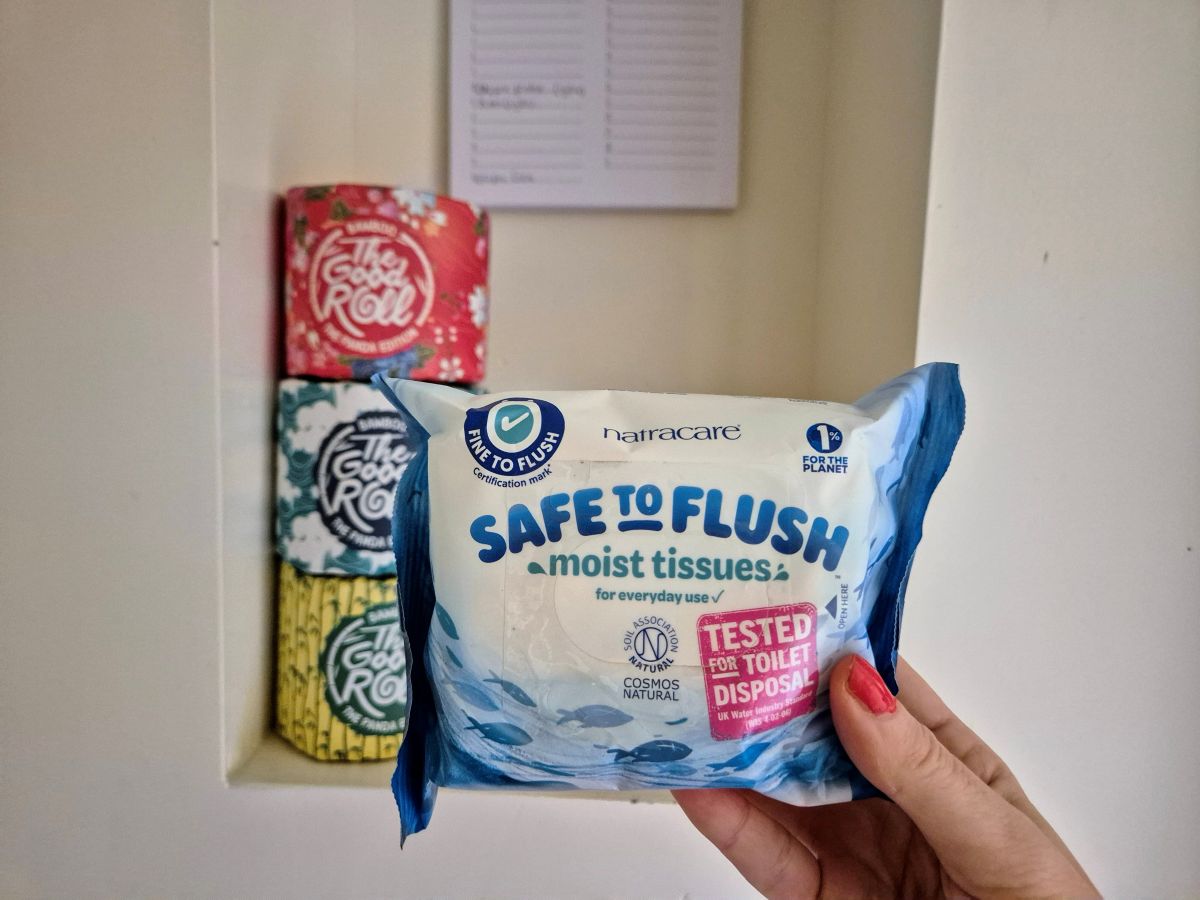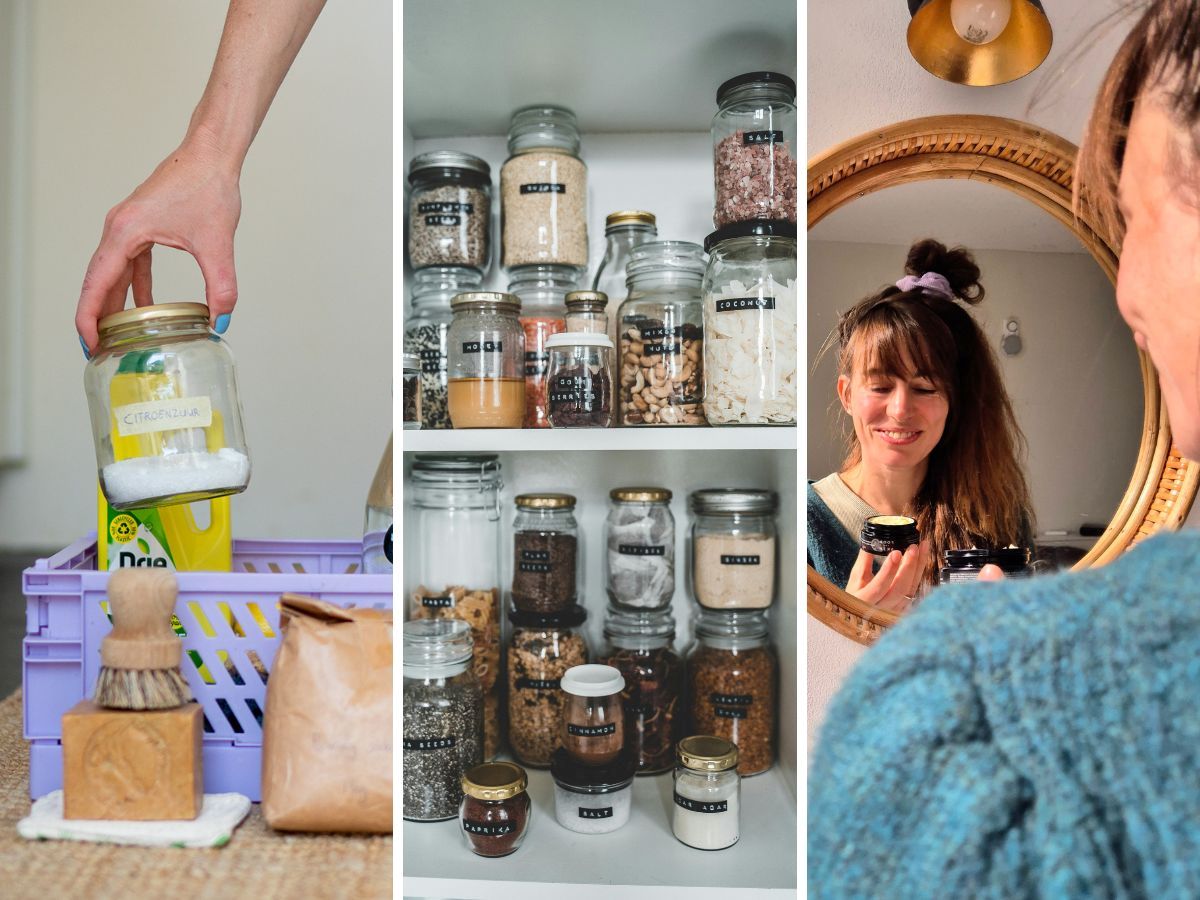Moist toilet paper for wiping after, many people like to use it. You might as well. How fresh and responsible is moist toilet paper really? What is it made of, and where does your moist toilet paper end up when you flush it? Thegreenlist.nl looked it up for you. And of course we have fine tips and alternatives to damp toilet paper for you.
Damp toilet paper: that does not dissolve quickly, but clogs up
Weak stomachs may scroll on to the end of the article for the tips. For everyone else, and especially those who love damp toilet paper, here's the thing: damp toilet paper does not dissolve like regular ‘dry’ toilet paper, which quickly breaks into fibres. If you flush several wet wipes at once, you run the risk of it clogging your toilet. Ai. If you flush a maximum of one wipe at a time, that wet toilet paper will accumulate further down the toilet. How? All wet wipes flushed down the toilet go through the sewer to a water treatment plant. That journey takes a day or two at most. So your wet toilet paper arrives at the water treatment plant as... wet toilet paper.
Moist toilet paper, so that's a lot of work
Because even though the wipes are made of natural fibres, and even though it says ‘flushable’ or ‘biodegradable’ on the packaging, that dissolving takes between three weeks and three months. That is much longer than the travel time from the wet toilet paper to the water treatment plant. Consequence: the water purification plants in the Netherlands are sitting with filters full of moist toilet paper and other wet wipes. They get shit-sick of it, not our words. A huge amount of (literally!) work and also a ditto cost, as these wipes have to be removed from the filters and taken to a waste processor. For instance, foundation Rioned, the trade association, has an impressive figure: in 90% of sewage failures, wipes are the culprit, or at least play a role as an accomplice. And the cabinet is also putting pressure (on the pot). They want a ban because those clogged wipes cost the state some €55 billion a year. Sewerage companies even have a name for the wipes. They call it ‘sheep’. You can probably imagine how all that sticky paper, plastic and moisture clumps together into a ball that seems to look a lot like Shaun (you know, the sheep).
Not to mention the microplastic problem, because wipes containing plastic release teeny-tiny particles of plastic that pollute nature via this drain and damage... our health, among other things. Because they enter our food chain that way. Do we have your attention now?
Moist toilet paper: putting it to the test!
We did an experiment with wet toilet paper: we put into two jam jars filled with water a (according to the packaging) naturally flushable wet toilet paper from a well-known A-brand. We shook one jar vigorously every day for five days, to keep the bumpy road to mimic water purification. We left the other jar quietly. And, guess what? After two weeks (we gave it some time...), the damp toilet paper in jar number one was a thick mush - sheep? - of still overtly recognisable fibres. The other jar: in it was just another intact damp toilet paper. So in both cases, the tissue was far from dissolved.
The three P's you can flush without any problems
OK, now that you know about damp toilet paper and what (so not...) happens to it when you flush it, we have a few tips for you. The first tip, which the environment and the water treatment people will thank you for: don't flush damp toilet paper or other wipes down the toilet. A damp piece of toilet paper can really just go in the bin. The only three P's you can flush without risk to the environment or clogging: pee, poo and paper. And just to be clear: that is ‘normal’ toilet paper. This is because it is made of fibres that do disintegrate quickly and therefore do not clog installations. And what's more, ordinary toilet paper does not contain microplastics, which of course we also like to avoid. We wrote about ‘plain’ toilet paper before, by the way.
Tips! How not to get wet with wet toilet paperFind the best options for wet toilet paper, preferably choose a brand without plastics, a finer choice for the world. You can tell whether there are plastics in moist toilet paper or other wipes by the obligatory blue/red logo. Some plastic-free wipes are Natracare Safe to Flush, Page Pure moist toilet paper, Edet moist toilet paper Chamomile (made of 100% vegetable fibre). Many supermarket house brands also have moist toilet paper in their range, check the packaging. Since we are already interfering in the privacy of your toilet visits, here's the thing... Even with ‘flushable’ or ‘biodegradable’ on the packaging, you should not flush damp toilet paper, but put it in the bin after use. That really makes a difference. Nice play on words, we agree.



Hooked on wet wipes? Buy them plastic-free from eco-friendly brands that have been labelled for them. And, if at all possible, don't flush them down the toilet but throw them in the bucket next to it.
Finally, another good idea (and flushable!): turn a few sheets of ordinary toilet paper and a special spray into your own wet toilet paper. The Good Roll has the Your Booty Buddy spray in the range. Or try the spray from The Good Brand.
So you see, by diving a little deeper into the pot, you can make a big difference. Fans of wet toilet paper can still wipe their bibs nice and wet, without spreading microplastics and disturbing things. Buy those wipes more consciously and don't throw them in the pot and you have already made a difference today. Happy wet wiping!
More sustainable tips
- Also see: More tips on how to tackle the smallest room in the house in a more eco-friendly way.
- Also see: Shorter showering and other sustainable shower tips.
- Also see: the toilet bombs vna Yokuu with good bacteria for hard cleaning.
Sources: RTV Oost, Plastic Soup Foundation, NRC (14 January 2025), telegraph.nl.












